Summer Scouting Important for Top Soybean Yields
Beans got off to a rough start and growers are seeing some unexpected issues pop up. Temperatures across much of Illinois continue to be above normal during June. These conditions may deter you from scouting fields, but it is especially important to observe growing crops to diagnose insect and disease pressure before it reaches economic levels. During late vegetative and early flowering stages of soybeans there are several things to look for while scouting. Insects of concern that may be present include Japanese beetles (insert), bean leaf beetles, soybean aphids and spider mites. Each of these insects causes different [...]
Tips for planning and producing a 100-bushel crop.
If you have ever seen the movie Groundhog Day, you may be able to relate to the main character’s constant dilemma, which is being stuck in the same day, day-after- day. This is how my life, as well as all fellow agronomists and growers, can be feeling this time of year. However, with hard work and persistence comes great reward, which we will glean shortly in the rapidly approaching harvest season. This coming harvest season brings an extra degree of suspense. For me, I will be harvesting my first Illinois Soybean Yield Challenge contest field. Growing this field of [...]
Calculator Helps Prioritize Road and Bridge Projects
When municipalities are tasked with determining which road and bridge improvement projects should take precedence, it can be a challenge to prioritize. That was the case in Peoria County, where officials looked at 12 projects to consider repair or replacement. Of the 12, almost an even split existed between rural and urban projects. At first glance, urban projects appeared higher priority because of the larger amount of traffic traveling the roads. However, after a more in-depth evaluation using the Travel Demand Model by engineering firm Hanson Professional Services, officials moved the Trivoli Road Bridge located in rural, southwest Peoria [...]
Soybean Nodules and Nitrogen Demand
Are your soybean plants nodulating and fixing nitrogen or do you just assume they are? Nitrogen is 1 of 17 essential elements that all plants need to grow and reproduce, however, soybeans and other legume crops can produce a large percentage of their total requirements. Most producers invest a substantial amount of time planning, calculating needs and applying nitrogen for a corn crop, which needs about 1.1-1.2 units of nitrogen for each bushel produced. It’s equally important to spend a similar amount of time reviewing the nitrogen supply/demand variables for soybeans, which require nearly 4 to 5 lbs. of [...]
Making Early Applications in Soybeans
Post applications to promote soybean growth should be timed for optimal efficacy. As growers, we often look for the application timing that is convenient, or most cost effective, and can apply multiple products in a single pass. For many of the products on the market, there are recommended timings to optimize their efficacy. Soybeans will determine their number of branches between V2 and V3. Some growers have done a form of mechanical damage to influence branching at this stage. Rolling is the most common practice, but some have used a form of mowing to also induce branching. As with [...]
Farming with Ephemeral Gullies: Fix It, Don’t Disk It!
“Ephemeral gullies” are small channels that are formed in natural, concentrated water flow areas. They are generally shallow, yet visible, and are normally easily filled in by annual tillage. They will typically re-develop again in the same location after additional runoff events and continue to erode valuable topsoil. In contrast, “classic gullies” are deeper channels that are not easily filled by normal tillage equipment and usually not crossable at all. Disking or smoothing the gullies will NOT fix the problem. Gully Control Control of ephemeral gullies begins with minimizing runoff by improving water infiltration and protecting the soil surface—in [...]
Seedling Diseases in Soybean More Evident Throughout the State
Article originally posted on the Bulletin. With the storm that moved through the state the past week, it is not surprising that we are seeing more seedling diseases in soybeans. In many cases Rhizoctonia has been identified as the causative organism, alone or in combination with other soil issues such as compaction. Rhizoctonia is one of the most common and problematic seedling issues for soybean producers in Illinois, and can cause significant yield losses due to stand reduction and reduced plant growth. In addition to killing germinating and emerging seedlings, Rhizoctonia can produce stem cankers. Cankers are sunken lesions [...]
Liberty Application Procedures
The number of acres planted to LibertyLink® soybeans has grown significantly in 2018 and I want to thank all of you who plant LibertyLink beans as an alternative to traditional glyphosate beans. Here is a list Bayer uses to help growers be successful with Liberty herbicide application technology. Start clean, prior to Liberty application, with a burndown herbicide or tillage (vertical tillage tools not recommended). Apply full labeled rates of a soil residual herbicide with 2 effective modes of action targeting problem weeds approximately 1 week before planting, or as close to planting time as possible. Liberty may be [...]
Illinois Soybean Yield Challenge
Why helping with the Illinois Yield Challenge, since its inception in 2009, interested me and why Illinois needed this initiative. After a career in the fertilizer industry I have been doing contract agronomy work with chemical companies, primarily BASF, and have always been interested in increasing soybean yield. I attended the first Soy Yield Challenge organizational meeting in 2009. At that time many farmers were frustrated with soybean yields. They were having a lot of success raising corn yields, but they were hitting a plateau with soybeans. Chemical and seed companies were also anxious to help push soybean yields [...]
Volunteer Corn Impacts Yield
So just how much yield loss comes from volunteer corn? In Roundup Ready®, Xtend® or Liberty® beans, volunteer corn from the previous corn crop can cause yield loss. However, applying a grass herbicide with your post herbicide application is an easy fix. So how much yield loss comes from volunteer corn? Recent reports show us the numbers. University of Nebraska: Volunteer corn density of 3,500 plants/acre led to 10% yield reduction in soybeans. Doubling the density to 7,000 plants/acre led to a 27% yield reduction. A density of 3,500 clumps (dropped ears) of corn/acre resulted in a 40% yield [...]

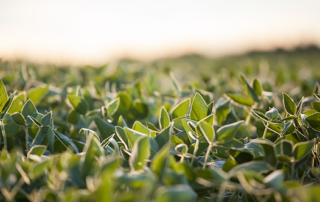
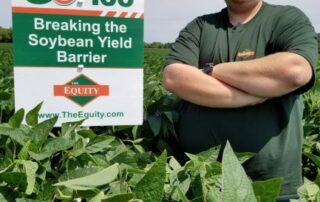
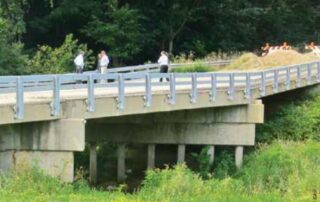
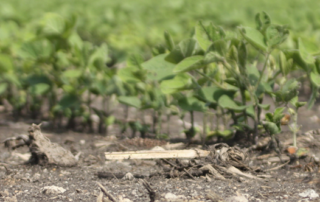
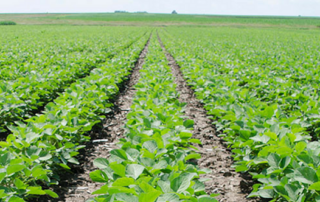
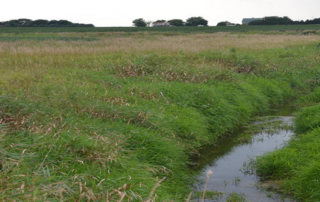
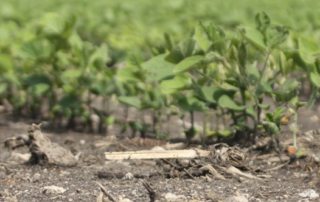
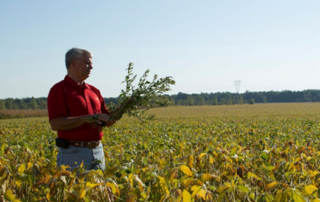

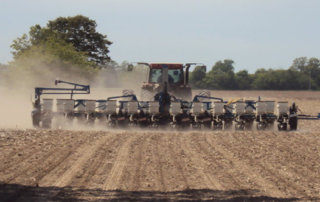



 and then
and then